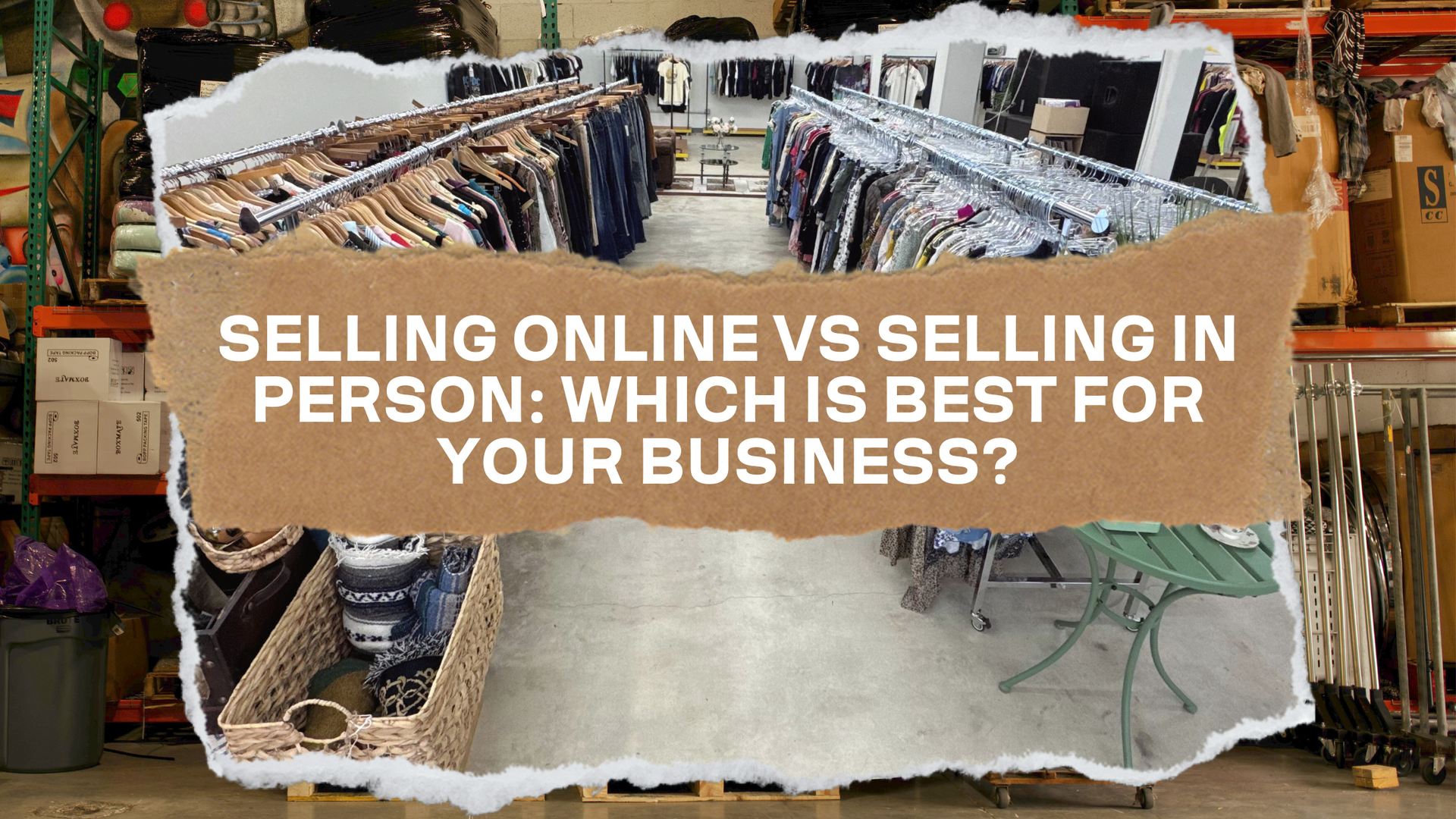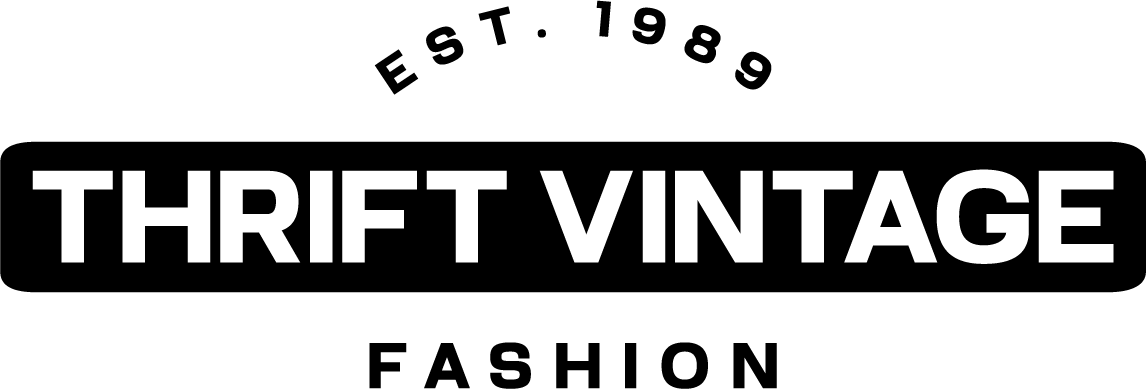
Selling Online vs Selling in Person: Which is Best for Your Business?
In today’s evolving retail landscape, selling thrifted and vintage fashion has never been more exciting—or more competitive. Whether you’re just starting or looking to expand, you might be wondering: should you focus on selling online, or is selling in person the better option? Each method comes with its own set of pros and cons, and ultimately, the best choice depends on your goals, resources, and customer engagement strategy.
In this blog, we’ll dive into the advantages and challenges of both selling online and selling in person. We’ll also share insights from our recent conversations with business owners, highlighting what’s working for successful resellers.
The Pros and Cons of Selling Online
Pros of Selling Online
1. Access to a Wider Audience
Selling online allows you to reach customers across the country—or even internationally. Instead of being limited to foot traffic in a specific location, an online store makes your inventory available to anyone with an internet connection.
2. Lower Overhead Costs
Operating an online store generally costs less than maintaining a physical space. Without the need for rent, utilities, or physical displays, you can reinvest savings into marketing, inventory, and customer service.
3. Sales Automation and Scalability
Once your website is up and running, customers can shop at any time. Automated checkout, inventory management, and digital marketing tools allow for a hands-off approach, making it easier to scale your business over time.
4. Multiple Selling Platforms
You’re not limited to just your website—you can also sell on platforms like Instagram, Depop, Poshmark, and Etsy, each offering its own built-in audience of fashion enthusiasts.
Cons of Selling Online
1. High Competition
With countless online sellers vying for attention, standing out requires strong branding, high-quality product images, and consistent marketing efforts.
2. Shipping and Logistics Challenges
Managing shipping can be a hassle. Packaging, shipping fees, and potential returns add extra costs and complexity to your business operations.
3. Lack of Immediate Customer Interaction
Online selling means you don’t get the same personal engagement with customers. Without direct interaction, it can be harder to build loyalty and trust, which is often easier in face-to-face sales.
4. Marketing is Essential
Unlike a physical store or a market booth that benefits from spontaneous foot traffic, online selling relies heavily on marketing. Whether it’s SEO, paid ads, or social media engagement, attracting online buyers takes effort and strategy.
The Pros and Cons of Selling In Person
Pros of Selling In-Person
1. Stronger Customer Connections
One of the biggest advantages of selling in person is the ability to build relationships with your customers. When shoppers can see, touch, and try on items, they are more likely to make a purchase—and come back for more.
2. Higher Conversion Rates
People who walk into your booth or store are often ready to buy, unlike online shoppers who might browse without commitment. In-person selling allows you to answer questions, provide styling advice, and create a personalized shopping experience that leads to higher sales.
3. Immediate Cash Flow
With online sales, you may have to wait for payments to process or deal with platform fees. Selling in person, especially at markets or pop-up events, means instant transactions and no waiting for payouts.
4. Brand Awareness and Community Building
Having a presence at local markets or pop-ups helps establish your brand within the community. Customers remember personal interactions, making them more likely to seek out your business again.
Cons of Selling In Person
1. Limited Reach
Unlike online selling, in-person sales are limited to those who visit your location or event. If foot traffic is low, your sales will reflect that.
2. Higher Upfront Costs
Setting up a booth at a market requires an initial investment in table rentals, displays, and inventory. If you opt for a permanent retail space, rent and utilities become ongoing costs.
3. Time and Effort Required
Unlike an online store that operates 24/7, selling in person requires being physically present. Whether it’s setting up a pop-up or managing a storefront, the time commitment can be significant.
4. Weather and Location Dependence
Outdoor markets can be affected by weather conditions, while fixed-location stores depend on consistent foot traffic. Choosing the right venue is crucial to success.
Why Many Successful Businesses Sell In Person
Over the past few weeks, we’ve had the privilege of speaking with many of our customers to learn more about their businesses. One common theme emerged—many of the most successful sellers have a strong in-person presence.
Selling in person allows for direct customer feedback, instant transactions, and relationship-building that leads to repeat customers. While online selling provides convenience and scalability, nothing quite compares to the trust and brand loyalty built through face-to-face interactions.
For those just starting, participating in local markets is an excellent way to test products, gain real-time customer insights, and refine your brand. Many resellers who began with online sales have found that introducing in-person selling significantly boosted their business.
Finding the Right Balance
The good news? You don’t have to choose just one! Many successful thrift and vintage sellers find a balance between online and in-person sales. Here are a few ways to make the most of both approaches:
-
Use Online Sales to Supplement In-Person Sales – List exclusive, high-ticket items online while using in-person events for volume sales and customer engagement.
-
Promote In-Person Events Online – Use social media and email marketing to announce when and where you’ll be selling in person, driving traffic to your booth or store.
-
Offer Special Deals for In-Person Shoppers – Incentivize in-person sales with discounts or bundle deals to encourage repeat visits.
-
Gather Customer Emails in Person – Build an email list at markets to keep in touch with customers and encourage future online purchases.
Final Thoughts
Both online and in-person selling have their advantages, but many thriving businesses leverage face-to-face interactions to drive success. Whether you’re setting up at a weekend market or launching a pop-up shop, selling in person can deepen customer relationships, boost sales, and establish brand loyalty.
If you’ve been selling online and are looking for new ways to grow, consider exploring in-person sales. The direct customer connections and instant feedback could be exactly what your business needs to take things to the next level.
Have experience selling online or in person? We’d love to hear your thoughts! Drop a comment or reach out to us—we’re always excited to learn more from our amazing community of thrift and vintage sellers.
